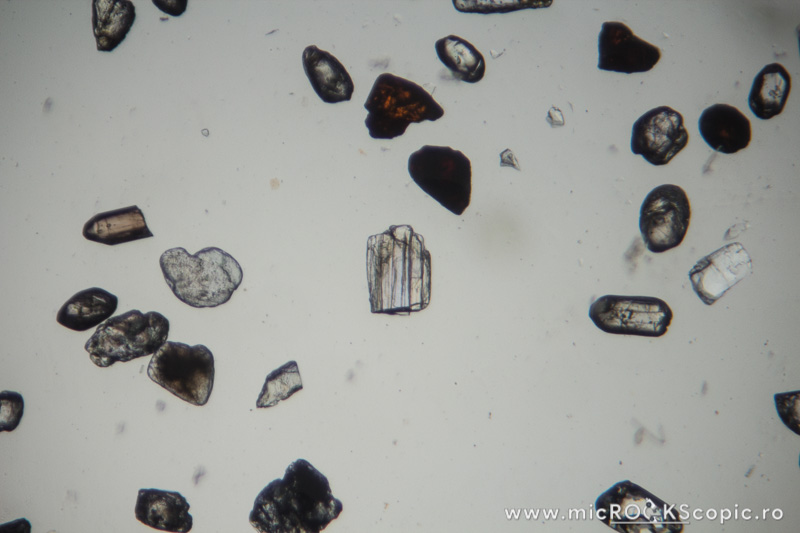About Kyanite
From Greek word for blue, in allusion to its most common color.
Kyanite hand-specimen
Formula: Al2SiO5
System: Triclinic
Color: Blue, white, light gray, etc.
Lustre: Vitreous, Sub-Vitreous, Greasy, Pearly
Hardness: 5½–7
Density: 3.53–3.67
System: Triclinic
Color: Blue, white, light gray, etc.
Lustre: Vitreous, Sub-Vitreous, Greasy, Pearly
Hardness: 5½–7
Density: 3.53–3.67
Kyanite PPL properties
Relief: High positive
Habit/Form: Kyanite commonly forms elongate bladed or columnar crystals that may appear to be bent. It is rarely fibrous.
Color: Colorless to pale blue; violet blue (thick section), cobalt blue (thick section)
Pleochroism: None to weak (violet-blue, deep cobalt blue).
Cleavage: Perfect parallel to {100}, less perfect parallel to {010}, also cross parting {001} at angles of 85° with the length of the crystals.
Habit/Form: Kyanite commonly forms elongate bladed or columnar crystals that may appear to be bent. It is rarely fibrous.
Color: Colorless to pale blue; violet blue (thick section), cobalt blue (thick section)
Pleochroism: None to weak (violet-blue, deep cobalt blue).
Cleavage: Perfect parallel to {100}, less perfect parallel to {010}, also cross parting {001} at angles of 85° with the length of the crystals.
Kyanite XPL properties
Isotropy/Anisotropy: Anisotropic
Interference color: Order I white and yellow to order I red
Extinction angle: Inclined; bladed crystals display 0-30° extinction. Angle on {100} is about 30° with the length of the crystals. In other sections parallel to the c axis the extinction angle is small (5-8°), sometimes practically zero. In cross sections the extinction is parallel to almost parallel.
Twins: Twinning is frequent; there are two common twin-laws (simple or polysynthetic): (1) {100} = multiple twinning as normal or parallel twins, (2) {001} = lamellar twins on {001} may be the result of shear pressure.
Uniaxial/Biaxial: Biaxial (-)
Optic axial angle (2V): 2V measured: 82 – 83°, calculated: 84°
Interference color: Order I white and yellow to order I red
Extinction angle: Inclined; bladed crystals display 0-30° extinction. Angle on {100} is about 30° with the length of the crystals. In other sections parallel to the c axis the extinction angle is small (5-8°), sometimes practically zero. In cross sections the extinction is parallel to almost parallel.
Twins: Twinning is frequent; there are two common twin-laws (simple or polysynthetic): (1) {100} = multiple twinning as normal or parallel twins, (2) {001} = lamellar twins on {001} may be the result of shear pressure.
Uniaxial/Biaxial: Biaxial (-)
Optic axial angle (2V): 2V measured: 82 – 83°, calculated: 84°
Kyanite distinguishing features under the microscope
Get Geology Toolkit Premium for more features of Kyanite thin section under the microscope.
References
- Deer, W. A., Howie, R. A., & Zussman, J. (2013). An introduction to the rock-forming minerals (pp. 498). Mineralogical Society of Great Britain and Ireland, London.
- mindat.org – The Mineral Database









